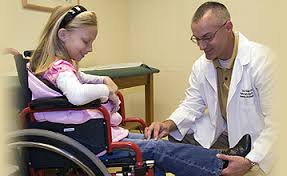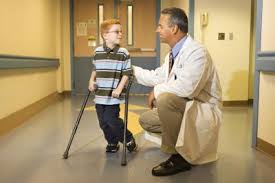What to expect from your pain management specialist
What pain specialists treat
Pain management specialists are doctors who can diagnose and treat chronic pain. This is pain that you may have for more than three months that isn’t getting better. Although you may try some self-care at home or see your primary care doctor for pain when it first develops, you usually would see a pain management physician for pain that doesn’t go away.
Here are a few examples of the types of pain managed by pain management specialists:
- Back pain.
- Neck pain.
- Headaches/migraines.
- Arm or leg pain.
- Abdominal pain.
- Pelvic pain.
- Nonspecific joint pain.
- Pain related to a failed surgery.
- Pain related to cancer.

Before Your Appointment
If you are seeking help for chronic pain, the following will be helpful to you as you prepare to meet with a pain management specialist for the first time.
Plan to bring the following items with you to your appointment:
- All your medications – either the bottles or a list with current doses
- Contact information for your other physicians
- Your pharmacy’s contact information
- Your medical records, surgical records and imaging results
During Your Appointment
Arrive early so you can fill out forms. When you’re with the pain management specialist, share as much information as possible. This will help him or her make an accurate diagnosis and an effective treatment plan. Also be prepared to take notes.
Don’t hesitate to ask any questions or get clarification if there’s something you don’t understand. Some questions you’ll want to ask are:
- What are reasonable goals for treatment?
- Are there medications I should take or avoid?
- How can I keep myself free of further pain-related issues?
After Your Appointment
Take time to review everything you learned. If there’s anything you don’t understand or remember, be sure to call your doctor’s office.
During follow-up appointments, share how things are going. If you’re not seeing the results you expected, your doctor may adjust your treatment plan.

Types of pain treated by a pain management doctor
The types of pain treated by a pain management doctor fall into three main groups. The first is pain due to direct tissue injury, such as arthritis. The second type of pain is due to nerve injury or a nervous system disease, such as a stroke. The third type of pain is a mix of tissue and nerve injury, such as back pain.
Disorders that cause pain due to tissue injury
- Osteoarthritis (wear and tear arthritis in the large joints: knees, hips)
- Rheumatoid arthritis (arthritis due to an autoimmune reaction – felt in small joints like fingers, wrists)
Nerve or nervous system disorders that cause pain
- Stroke (post-stroke pain)
- Multiple sclerosis
- Spinal cord injury
- Neuropathy (nerve pain due to shingles, HIV, diabetes)
Mixed pain disorders
- Neck pain
- Back pain
- Cancer

Adjusting your plan of care with follow-ups
Most likely, your doctor will schedule your follow-up appointment one month after your initial evaluation to check on your progress in your plan of care.
Your physician will want to follow up with the effectiveness and potential side effects of any medications prescribed, and touch base about any of your questions after your procedure.
During the follow-up, you and your physician are tracking your plan of care’s success based on the following functional measures:
- Activity level: Has your activity level and function improved? How far can you walk before pain?
- Daily activities and self-care: Can you more effectively do your basic self-care and daily activities?
- Pain score: Has your pain score dropped since your initial evaluation?
- Goals: Have you met any of your goals since your initial evaluation?
If both of you conclude that not you’re not achieving enough progress due to side effects or a lack of efficacy, then your physician will adjust as needed.
Follow-ups are also used to assess and determine:
- Different medications and refills
- Last-minute procedures due to flare-ups
- Intrathecal pump refills
Typically, we find that chronic pain patients will consistently follow up with their physicians every month to keep track of and manage their pain effectively. On the other hand, we find that acute pain patients can have as few as three total visits before they find relief and are ready to be discharged.
Pain Clinic
A pain clinic is a location where multiple doctors and provide procedures to reduce pain. These clinics provide assistance through medication as well as other treatments that include managing pain through physical, behavioral, and psychological methods. Your treatment team may recommend changes in everyday routines and offer advice on retaining additional alternative medicine treatments. These alternative treatments range from acupuncture and meditation, to biofeedback.


